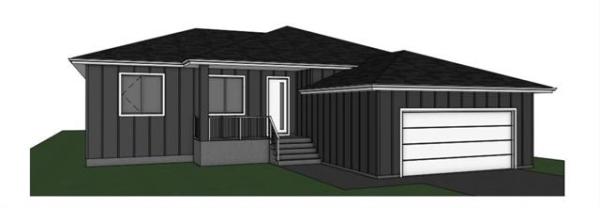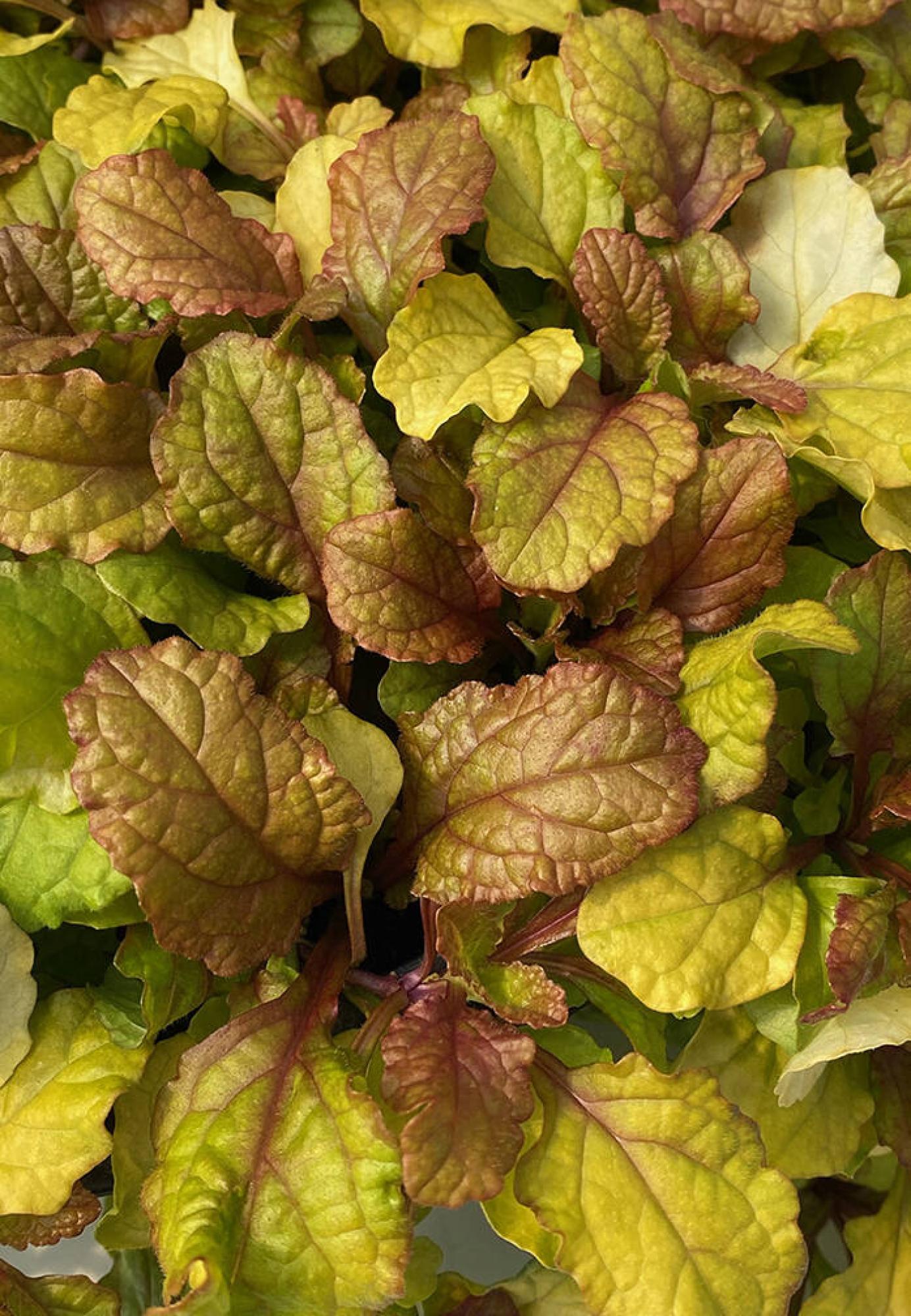
Garden Solutions
Light up your garden floor with the tri-coloured Ajuga Feathered Friend series. Shown: Parrot Paradise.
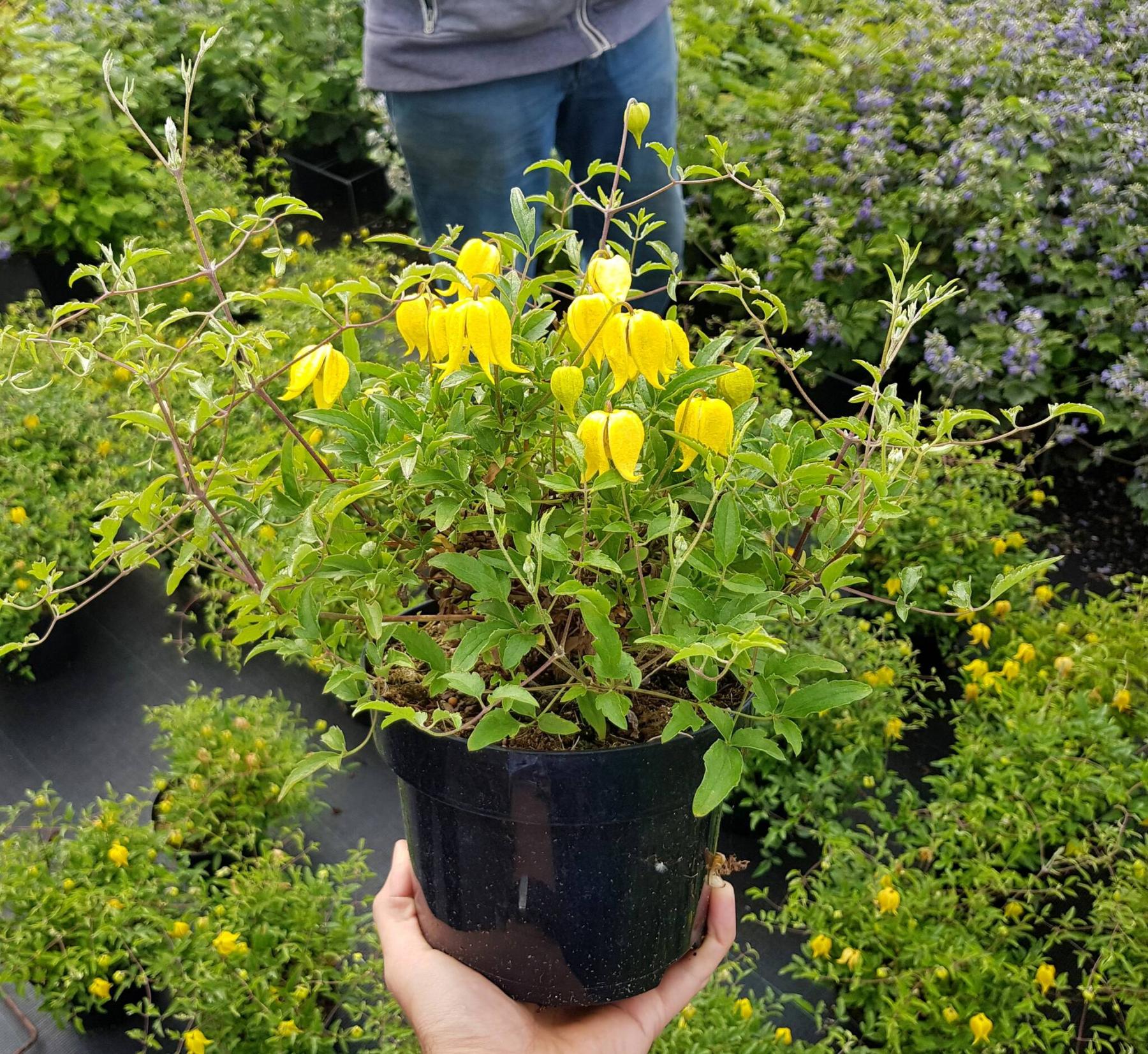
Concept Plants
Clematis Little Lemons has an ultra-dwarf habit. How sweet is that?
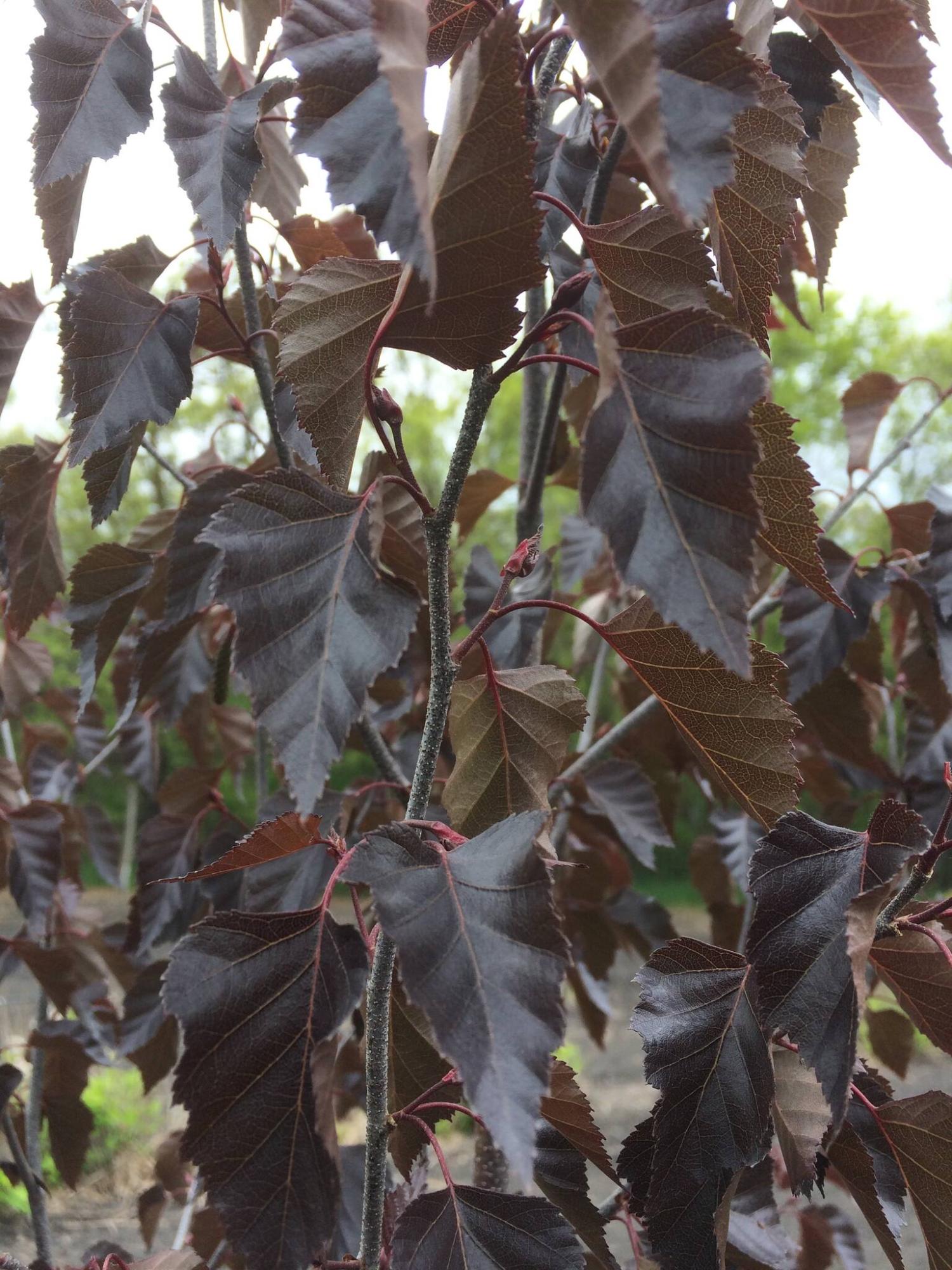
Dave Klassen
Purple Treasure Birch tree has gleaming dark purple foliage that turns orange-red in fall.
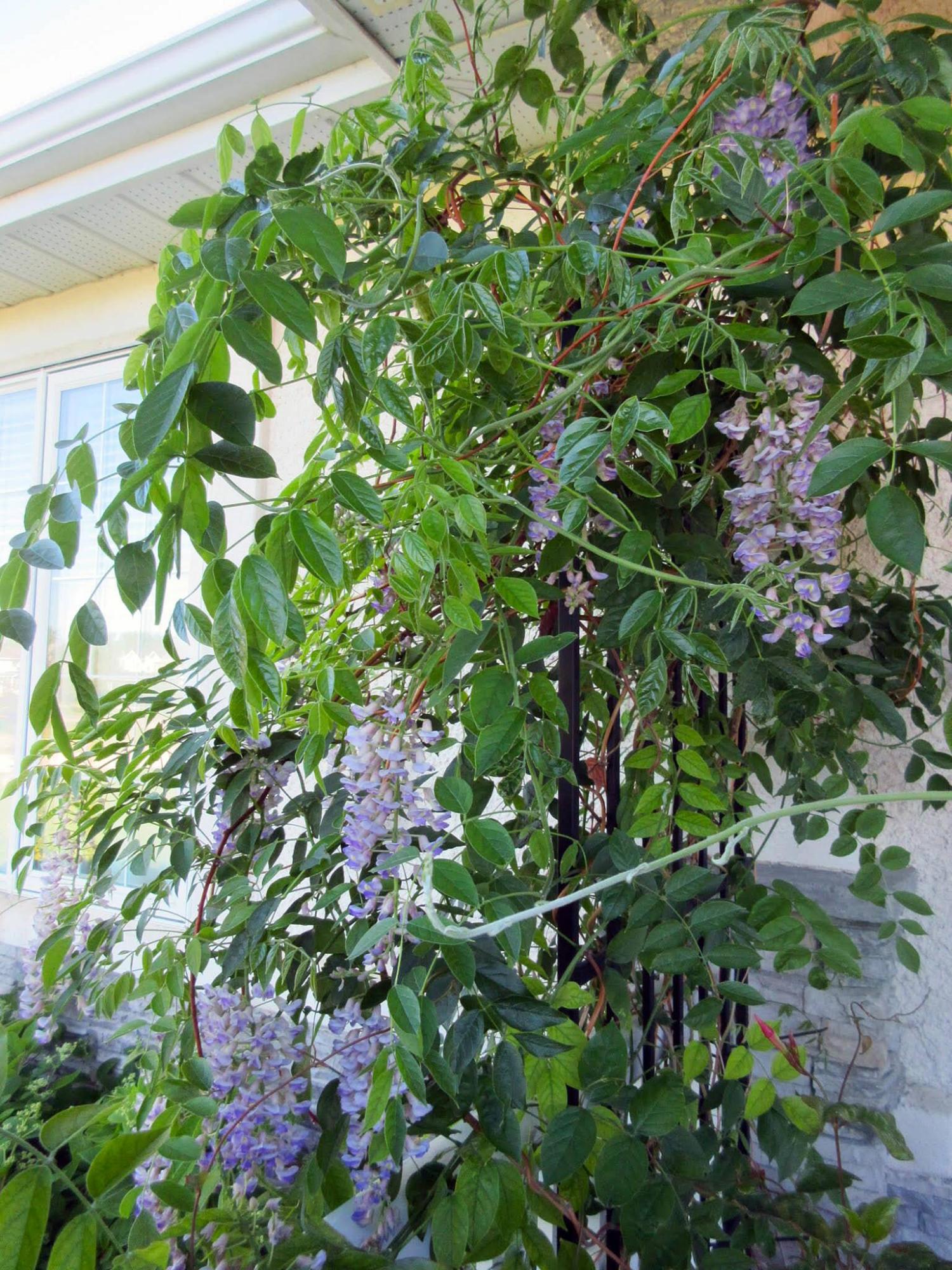
Edith Redekop
Shopping for something different? Blue Moon Kentucky Wisteria, shown here in a Manitoba garden, is a rare beauty.
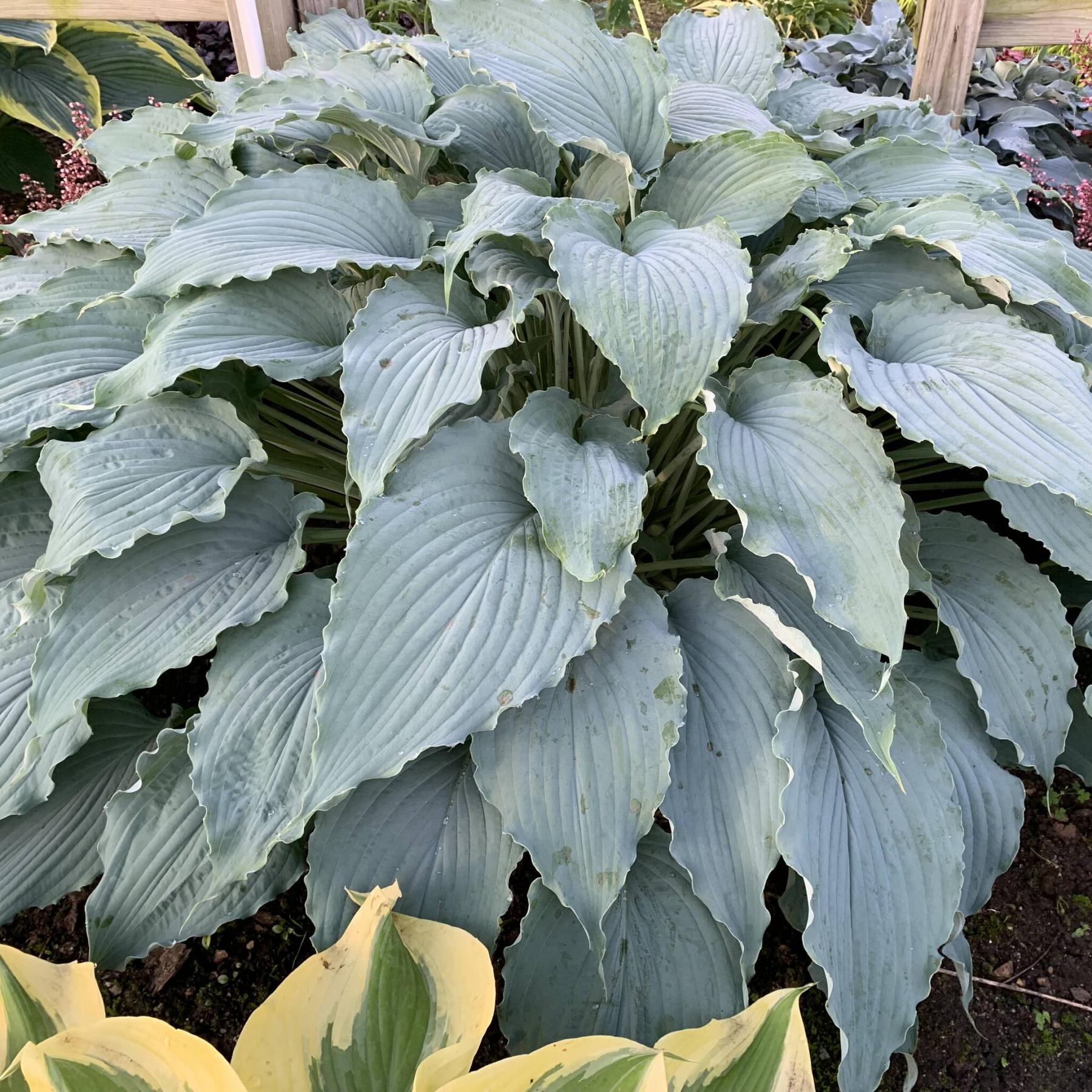
Walters Gardens Inc
Wind Beneath my Wings Hosta has a giant spread of 79 inches and loves growing in the shade.
Shopping for a plant that is a conversation starter?
If you are in the market for a unique focal point, dramatic contrast, shocking beauty, or something out of the ordinary, you don’t have to look too far. There are so many intriguing perennials, trees, and shrubs at local garden centres right now.
I stopped into Ron Paul Garden Centre on St. Mary’s Road last week to order pond stone and decided to take a quick look in their greenhouse. A semi-load of plants had just arrived. I gasped when I saw Wind beneath My Wings Hosta. A majestic hosta with heart-shaped, powder blue leaves with lightly ruffled edges, Wind beneath My Wings has an extraordinary spreading habit that is 79 inches (2 metres) wide and a height of 30 inches (76 cm) at maturity. Ultra tall, creamy flower stalks with lavender flowers in summer create an even greater impact. A stunning new hosta from Hans Hansen’s breeding program at Walters Gardens, Wind beneath My Wings is a hybrid of Hosta Neptune and Hosta Queen of the Seas. It is hardy to Zone 3.
Joel Bremault, customer service associate at Ron Paul, says that the blue hostas in particular demand a shady location. “Blue hostas have a waxy coating on their leaves and are not sun tolerant.” If you have a shady location with room enough for Wind Beneath my Wings, this is one hosta variety that will spark plenty of conversation. At $14.99, it’s a deal.
Another plant that immediately caught my eye was Kentucky Blue Moon Wisteria. In spring, Ron Paul had one-litre containers of wisteria which quickly flew out the door, says Bremault. Now Ron Paul is offering Blue Moon Kentucky Wisteria (Wisteria macrostachya) in two-litre containers for $29.99.
What’s the allure? This fragrant, twining vine with its twisted woody stems, deep green leaves with up to nine leaflets and long racemes of fragrant lavender blue flowers followed by showy bean-like seed pods is definitely out of the ordinary. First, you will need a sturdy structure because Blue Moon Wisteria grows to a height of six metres or more. But patience will also be needed. Wisteria can take more than a few years before it is established and starts to put on its spectacular flower show. To achieve this, though, wisteria has specific pruning requirements. The flowers develop on the previous year’s growth. In mid-summer, after the vine has finished blooming, prune back the long vegetative shoots to about 15 cm. A second pruning that leaves three to five buds should be done in late winter or early spring when the plant is dormant, and the framework is easily visible. Blue Moon wisteria is hardy to Zone 4a but don’t let that deter you. It can be found growing successfully in many local gardens. Add a protective layer of mulch in late fall.
If you are looking for a standout specimen tree with unique dark foliage, check out Dark Knight Crabapple (Malus x ByFrank) or Purple Treasure Birch (Betula papyrifera x ByDaveK). Dark Knight Crabapple has a mature height of 6 metres and width of 5 metres. A selection by well-known prairie plant breeder Rick Durand, Dark Knight has glossy, dark purple foliage and a handsome upright form. Hardy to Zone 3, it has good disease resistance. Jensen’s Nursery, 2550 McGillivray Blvd., is carrying Dark Knight but only two were remaining on my recent visit. No wonder. This new tree variety is a beauty.
Purple Treasure Birch is an exciting new selection by Dave Klassen, Shannon Oaks Tree Farm, Morden. In 2012, Klassen collected seed from a Chickadee Paper Birch that had open pollinated with Crimson Frost Birch. Purple Treasure Birch has a mature height of nine metres and width of six metres. Hardy to Zone 3, Purple Treasure Birch has very dark purple serrated foliage and contrasting showy white bark. The foliage turns orange-red in fall. This beautiful accent tree has an upright growth habit. Propagated and distributed by Bylands Nursery in B.C., Purple Treasure Birch is available at Sunshine Garden Centre in Steinbach but also check with your local garden centre.
Clematis Little Lemons is a genuine novelty. Listed as Zone 5 hardy, Sunshine’s Andrew Fehr doesn’t rule out the possibility that it might overwinter in our cold climate. “Little Lemons belongs to the Tangutica group of clematis,” says Fehr. Clematis tangutica has a solid reputation for cold hardiness. Of course, it remains to be seen if Little Lemons can survive our winters. Regardless, Little Lemons has other attributes. It has an extraordinary dwarf habit which makes it ideal for hanging baskets or tucking near the edge of a stacked stone bed. The nodding yellow flowers and shiny seed fluff will have visitors turning their heads. That’s always fun. Doesn’t every gardener love to be asked, “What is that plant and where did you find it?”
Another star attraction, says Fehr, is Hibiscus Starry Starry Night which has ridiculously pretty flowers with a pink and white candy swirl pattern and near-black, maple-like foliage. The flower show starts in August. Starry Starry Night is hardy to Zone 4. Fast growing, this shrub-sized plant quickly reaches more than one metre tall and wide.
Some plants have great names that enhance their appeal. Take Gone With The Wind Prairie Dropseed, for example. A new seed strain of Prairie Dropseed (Sporobolus heterolepis), a short, clump-forming native grass, Gone With The Wind grows to a height of 91 to 101 cm. Its green foliage is topped by wispy and fragrant tan flower panicles. Indeed, I bought this one for its name. But also, you can never go wrong with a hardy prairie grass.
Ground covers are the unsung heroes of the landscape. They provide protection for soil, help to prevent erosion, suppress weeds, and can reduce our use of water. The Ajuga Feathered Friends series was introduced in 2021 by Chris Hansen. There are nine colourful varieties in the series, each one with bird-like names such as Cordial Canary, Parrot Paradise, Fancy Finch, Noble Nightingale, Petite Parakeet, Flashy Flamingo, Fierce Falcon, Pleasant Pheasant, and Tropical Toucan.
Unlike ajuga varieties that have leaves that are so dark they are difficult to distinguish from the surrounding soil, Ajuga Feathered Friends (Zone 4) brings vibrant colour to the floor of the garden. Parrot Paradise, for example, has vivid tri-colour leaves of bright yellow, orange, and red with contrasting cobalt-blue flowers. Lit up by the sun, the leaves glimmer like gold. Mature height is 10 cm with a spread of 45 cm.
I first saw Ajuga Feathered Friends in the trial garden at Vanstone Nurseries in Portage la Prairie. “I love this series of Ajuga,” says Owen Vanstone. “We ran this whole series through two winters in the trial with excellent success. The trial location is in full sun with average drainage and the plants performed well.” A partial shade location provides the brightest foliage.
colleenizacharias@gmail.com

